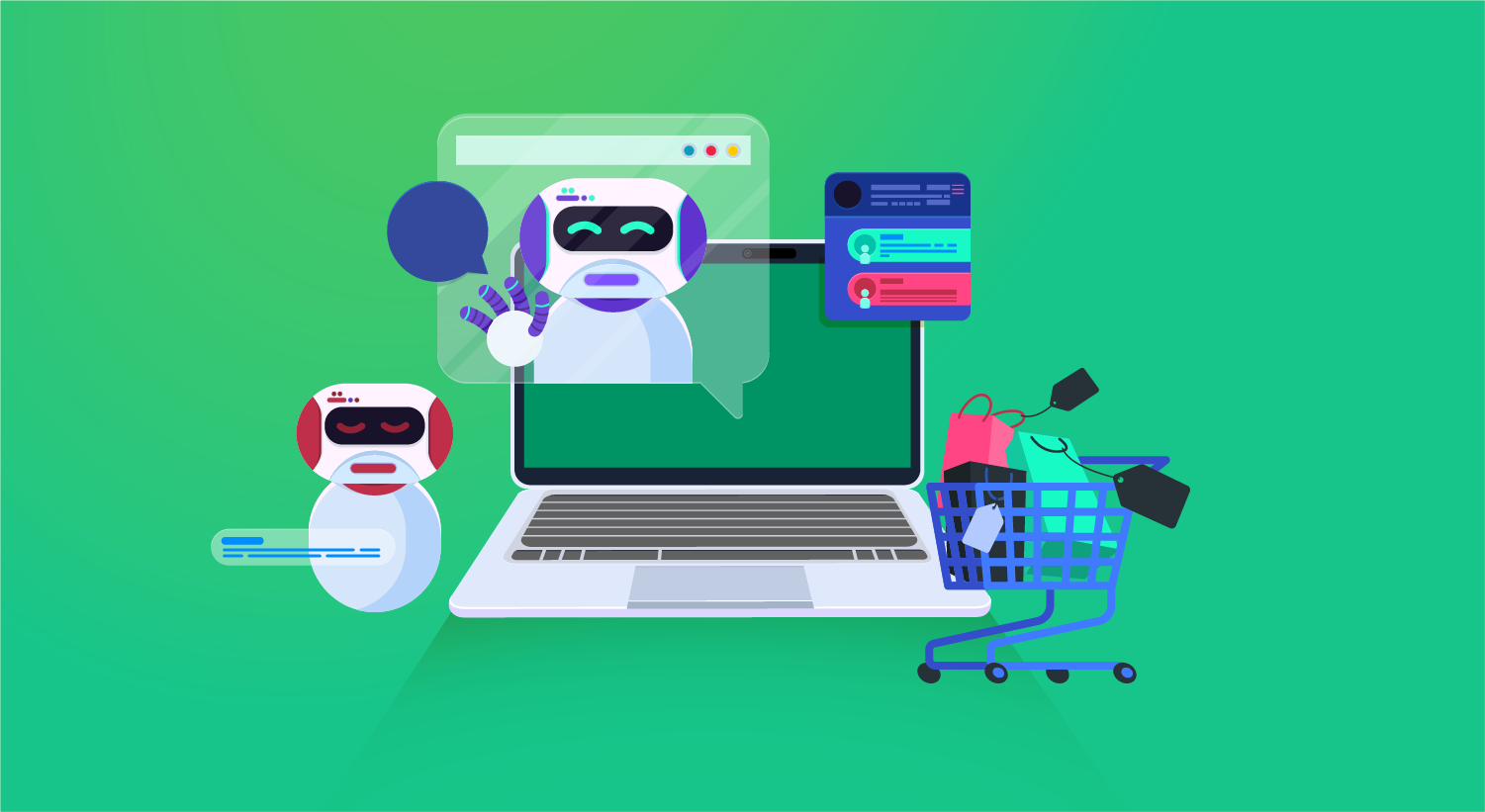The Role of Chatbots in E-Commerce Customer Service
Introduction
In the ever-evolving landscape of e-commerce, providing exceptional customer service is a key differentiator for businesses. Chatbots have emerged as a powerful tool, revolutionizing the way brands interact with customers online. In this blog, we'll explore the role of chatbots in e-commerce customer service and how they contribute to enhanced customer satisfaction and operational efficiency.
The Evolution of Customer Service in E-Commerce
1. Shifting Customer Expectations
Additionally, as online shopping becomes more prevalent, customer expectations for instant and personalized support have risen. Furthermore, traditional customer service methods are often unable to meet the demands of the modern, tech-savvy consumer.
2. Need for Real-Time Interactions
Additionally, customers expect seamless communication channels and instant responses. Consequently, businesses must prioritize efficient customer service to maintain a positive reputation.
3. 24/7 Availability
Additionally, e-commerce companies must consider implementing advanced technologies such as chatbots and AI-driven support systems. These tools can provide instant assistance and resolve customer inquiries efficiently. In contrast, traditional customer service models may struggle to keep up with the volume and speed of online customer interactions. Moreover, by embracing these innovative solutions, companies can enhance customer satisfaction and loyalty, ultimately leading to increased sales and business growth.
The Rise of Chatbots
1. Instant Responses
Additionally, chatbots can assist with troubleshooting issues, such as technical problems or account inquiries. Furthermore, they can streamline the customer service process by handling routine tasks, allowing human agents to focus on more complex issues. In conclusion, chatbots play a crucial role in enhancing the overall customer experience by providing quick and efficient assistance.
2. Personalized Interactions
Additionally, advanced chatbots can also analyze data in real-time to provide more accurate responses. Moreover, they can adapt their language and tone to suit different customers and situations. Furthermore, they can learn from each interaction to continuously improve their performance.
3. Handling High Volume Queries
In peak periods or during sales events, the volume of customer inquiries can skyrocket. Chatbots efficiently handle high volumes of queries simultaneously, ensuring that every customer receives prompt attention.
Key Benefits of Chatbots in E-Commerce
1. Improved Response Times
Chatbots significantly improve response times compared to traditional customer service channels. Users receive instant assistance, leading to quicker query resolutions and an overall positive customer experience.
2. Cost-Effective Customer Support
Automating routine and repetitive tasks through chatbots reduces the need for extensive human intervention. This not only streamlines operations but also proves cost-effective for businesses, allowing human agents to focus on more complex issues.
3. Enhanced User Engagement
Interactive and conversational, chatbots contribute to enhanced user engagement. They can guide customers through product selections, provide information, and even offer personalized promotions, creating a more interactive shopping experience.
Practical Applications of Chatbots in E-Commerce
1. Order Tracking and Updates
Chatbots excel at providing order tracking and updates. Customers can receive real-time information on the status of their orders, estimated delivery times, and any relevant updates.
2. Product Recommendations
Leverage chatbots to offer personalized product recommendations. By analyzing customer preferences and purchase history, chatbots can suggest relevant products, increasing the likelihood of upsells or cross-sells.
3. FAQ Assistance
Chatbots are effective at handling frequently asked questions. They can provide instant answers to queries about shipping, returns, product details, and more, reducing the need for customers to search through extensive FAQ pages.
Implementing Chatbots Effectively
1. Seamless Integration with Websites and Apps
Integrate chatbots seamlessly into your e-commerce website or app. Ensure that they are easily accessible, offering users the option to engage with the chatbot for assistance.
2. Natural Language Processing (NLP) Capabilities
Invest in chatbots with Natural Language Processing capabilities. This allows chatbots to understand and respond to user queries in a conversational manner, enhancing the user experience.
3. Continuous Learning and Optimization
Enable continuous learning for your chatbots. Regularly analyze user interactions, gather feedback, and optimize the chatbot's responses to improve its effectiveness over time.
Challenges and Considerations
1. Handling Complex Queries
While chatbots excel at handling routine queries, they may struggle with complex or nuanced issues. Ensure that there is a seamless transition to human agents for queries that require a higher level of expertise.
2. Maintaining a Human Touch
While automation is valuable, it's essential to maintain a human touch in customer interactions. Balance the use of chatbots with opportunities for customers to connect with human support when needed.
3. Data Privacy and Security
Address concerns about data privacy and security. Clearly communicate how customer data is handled, stored, and protected. Implement robust security measures to instill trust in customers.
Measuring the Success of Chatbots
1. Customer Satisfaction Ratings
Gauge customer satisfaction by collecting feedback on chatbot interactions. Monitor customer satisfaction ratings and use feedback to make improvements to the chatbot's functionality and responses.
2. Resolution Times and Efficiency
Track resolution times and the efficiency of chatbot interactions. Analyze how quickly queries are resolved and identify areas for improvement in streamlining the customer support process.
3. Conversion Rates and Upsells
Examine the impact of chatbots on conversion rates and upsells. Evaluate whether chatbots contribute to increased sales through personalized recommendations and effective engagement.
Conclusion

Chatbots have become integral to the success of e-commerce by providing instant, personalized, and efficient customer support. As technology continues to advance, businesses that embrace chatbots stand to gain a competitive edge in meeting the evolving expectations of online shoppers. By implementing chatbots effectively, addressing challenges, and measuring their impact, e-commerce brands can create a customer service ecosystem that enhances satisfaction and fosters long-term customer loyalty. Stay tuned for more insights into e-commerce trends and business best practices in our upcoming blogs.


